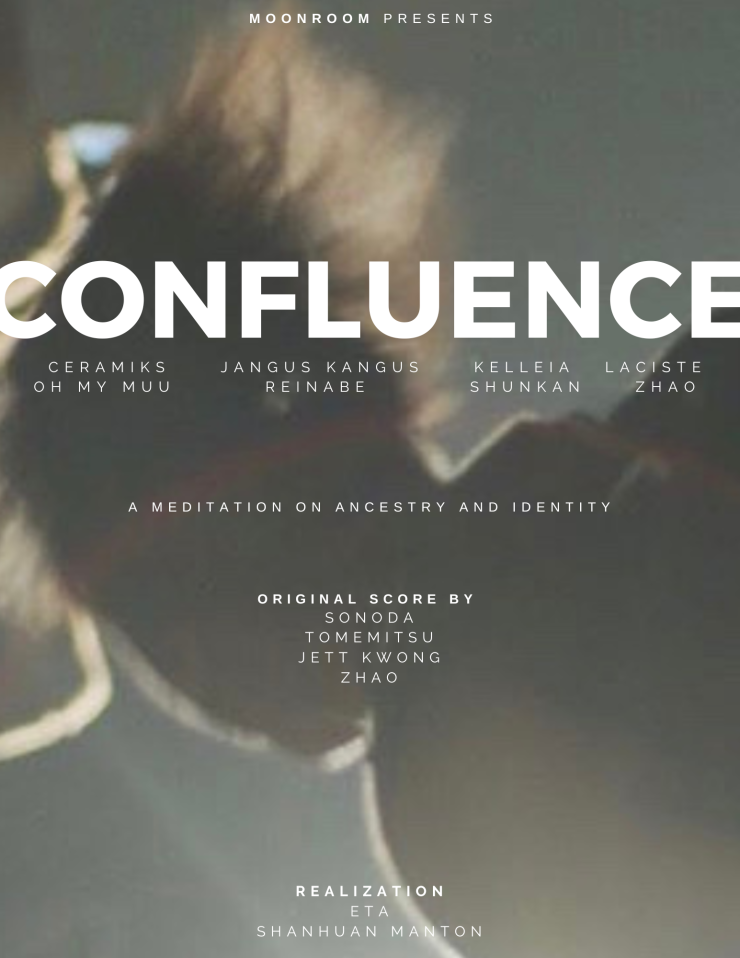Sometimes when you don’t have a budget, all you have to do is look closer. Resonant, personal stories surround us.
This post was written by Shanhuan Manton.
Confluence was a documentary short reverse-engineered based on the resources we had available and the limiting circumstances we faced. With no money, and stealing time between projects, we worked with our constraints to inspire creativity.
What we had was our minimal camera package and access to events, so we synthesized a creative approach to documentary filmmaking distinct to us. Partly inspired by our admiration for Thai auteur Apichatpong Weerasethakuhl and their permission to viewers that “you can even sleep if you want,” as well as our interest in slow cinema, we employed a meditative gaze to documentary filmmaking in our film, Confluence.
Confluence was shot during Moonroom’s 2019 PHASE series celebrating AAPI Heritage Month by highlighting AAPI artists with underground art and music showcases. In its three years of programming, the event had never been documented. It was important to us to share the stories and capture this event, as it was truly essential to its moment in time. However, we wanted to take a practical, utilitarian approach to not complicate the endeavor or overextend our means.
We knew the performance spaces would be crowded and dimly lit, so we had to keep things light and simple. Drawing from experience filming a variety of music events, music videos, and other performance scenarios, we decided we would be best served by shooting with a long lens, and decided to shoot exclusively on a single vintage 80mm f1.9 Mamiya Sekor – C adapted to BMPCC4K with a Metabones XL speedbooster.
Factoring in the crop factor of shooting 120 fps, this was equivalent to an approximately 215mm lens. Given the size of the venues, this allowed us to keep a low profile – staying far back from the stage while maintaining the ability to compose intimate shots of the musicians, with often surprisingly beautiful moments of audience and textures in the foreground.
When we filmed, we gave ourselves the following rules, not unlike a beginning meditation practice: to be as still as we could, with our attention focused on breath, allowing the mind, and the camera to wander if it did, with a gentle reminder to return to stillness and breath.
This was a meditative creative process, which we crafted into a sensory, attentive contemplation for viewing. Confluence became an experimentation in applying a meditative gaze towards its subjects, and letting the narrative be guided by them.

Not having the bandwidth to record on-location sound or to arrange the performers for traditional interview set-ups, we set about gathering oral histories from a few participating musicians by requesting personally recorded voice memos to send to us. Anticipating the challenging sound quality of these files, we designed the audio to feel like a distant, lo-fi transmission and accentuated it with a collaboratively orchestrated score that streamlined the piece’s overall hypnotic effect.
While it may be oft repeated, it has nearly always proven true for us, that creativity is borne of constraints. Whether those constraints are circumstantial, or self-imposed – incorporating them into the process can be enlightening and fruitful. In designing and practicing this process, we grew into our own methodology for filmmaking with a meditative gaze and will continue to employ new projects, both documentary and fiction, with this modest approach.
Confluence is screening on May 13th, 2023 at NFMLA and will be available soon for online streaming.













